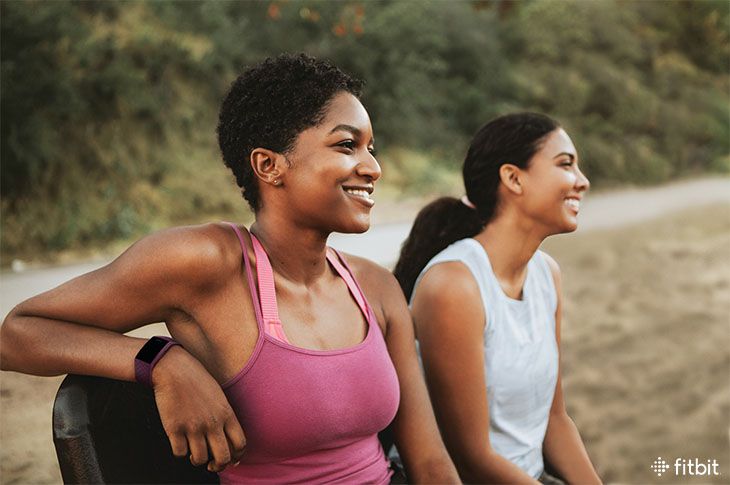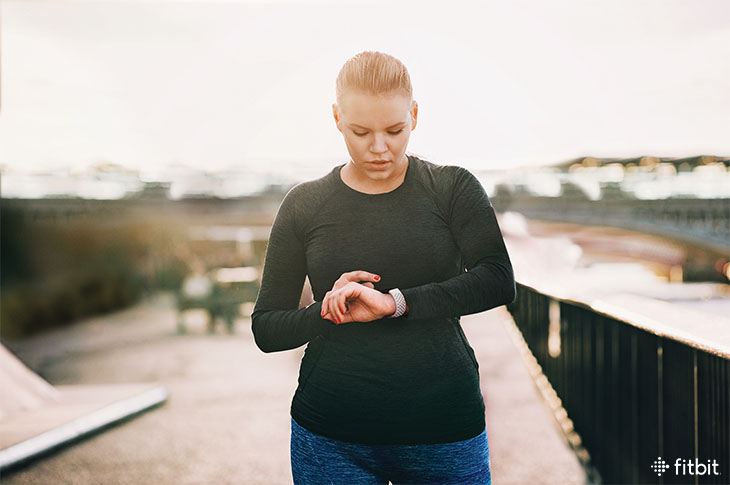
Ever notice how a new album from your favorite artist can get you stoked to work out? Us, too—music can have that effect on you. That’s why, with help from our music partners, Deezer, Pandora, and Spotify, Fitbit is bringing your health and fitness experience to new volumes with curated music playlists.
Yes, you heard that right—ranging from consistently paced music for a longer run, to faster tempo tunes for HIIT, and slower paced jams for recovery or yoga, you’ll have access to different playlists of curated music for different types of activity.
Keep reading to learn all about the new playlists and start reaching your health and fitness goals to the beat of your own drum.
What are Fitbit’s curated music playlists?
We know that playlists aren’t ‘one size fits all’ when it comes to workouts. So, together we created five playlists each for Deezer, Pandora, and Spotify.* All playlists use beats per minute (BPM) ranges to keep you motivated with the music for different types of activity.
Here are a few examples of some of the playlists you’ll find on the music services:
- AZM Workout (builds BPM over time): This playlist builds intensity over time to help you hit your AZM goal.
- Chill Beats (60-100 BPM): Chill, steady songs ideal for yoga or mat classes.
- Find your pace (BPM: 115-120): Ideal for long runs, bike, walking.
- Sync Your Stride (130-145): Ideal for syncing your pace with the rhythm when spinning, or even during power yoga.
- Take It to the Max (150-170): High-intensity music for when you need that extra push. Use it for sprint workouts or HIIT classes.
How do I access the playlists from my Fitbit device?
Ready to face the music? It’s simple—access the playlists from your Fitbit device by heading to the App Gallery in the Fitbit mobile app to download Deezer, Pandora, or Spotify. You can even access the playlists on the go, from your phone to your car or your smartspeaker, get your jam sessions wherever you are.
Premium subscriptions are required for the use of the music services and through Fitbit, you’ll get access to free trials for each Deezer, Pandora, and Spotify. Plus, get a free 6-month trial of Fitbit Premium with Fitbit Sense—discover patterns and insights from your Fitbit data and get personalized guidance to reveal a healthier, stronger you. Read more about what’s included in your Fitbit Premium membership here.
After you’ve downloaded the app to your device, connecting your accounts and accessing the curated playlists is easy. Here’s the breakdown:
- Connect your Deezer account to Fitbit by opening the Deezer app on your device and entering the activation code shown to www.fitbit.com/deezer.
- Once connected, you can head to the Media settings in the Fitbit mobile app to add the Deezer curated playlists or your favorited playlists from your account. Take these playlists offline and phone-free with the on-device app.
- Access the curated playlists on other devices by viewing the Fitbit profile on Deezer.
- Compatible Fitbit devices include Fitbit Ionic, Versa, Versa 2, Versa 3, and Sense.
- Deezer is available globally.
- Connect your Pandora account to Fitbit by going to the Media tile within the Fitbit mobile app and logging in to your Pandora account.
- Once connected, you can head to the Media settings in the Fitbit mobile app to add popular Workout stations from Pandora or auto-sync your top Pandora stations. Take these playlists offline and phone-free with the on-device app.
- Compatible Fitbit devices include the Fitbit Ionic, Versa, Versa 2, Versa 3, and Sense.
- Access the curated stations on other devices by searching for Fitbit in playlists.
- Pandora is available in the US only.
- Connect your Spotify account to Fitbit by going to the Media tile within the Fitbit mobile app and logging in to your Spotify account by clicking on Settings.
- Use “Spotify – Connect & Control” app to control your music from your wrist. Your phone must be nearby to use.
- Compatible Fitbit devices include: Charge 4, Ionic, Versa, Versa 2, Versa Lite, Versa 3 and Sense.
- Access the curated playlists by viewing the Fitbit profile on Spotify.
- Spotify is available globally.
It’s no secret that music is one of our best motivational tools, so plug in, focus up, and get started today.
* Pandora is US only. Deezer and Spotify are worldwide.
The post Listen Up: Fitbit’s New Curated Music Playlists Have Arrived appeared first on Fitbit Blog.
source https://blog.fitbit.com/fitbit-curated-music-playlists/














